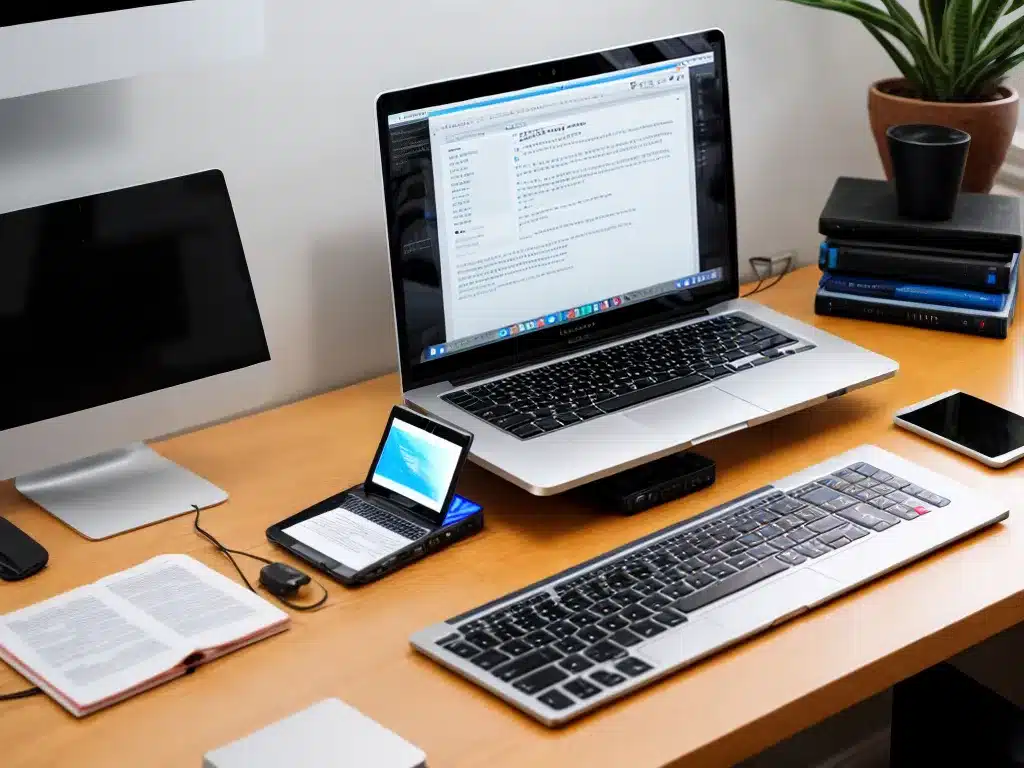
Introduction
Keeping my desktop and laptop backups in sync is critical for me. It ensures that I have the same files and data available on both machines so I can access what I need, when I need it – whether I’m working at my desk or on the go with my laptop. In this article, I will provide an in-depth guide on how I set up automated backup syncing between my desktop and laptop to accomplish this.
Choosing a Backup Software
The first step is choosing backup software that has the ability to sync multiple devices. There are quite a few good options out there both free and paid. I chose to go with Backblaze because of its seamless cloud syncing capabilities.
Key factors in my decision:
- Backblaze has native clients for both Windows and Mac so I can use the same service on both my desktop and laptop.
- It offers unlimited cloud backup space for one flat fee.
- Backups are fully automated once initially configured.
- Restores are easy to do right from the Backblaze web interface if needed.
- Data is securely encrypted both in transit and at rest.
Backblaze met all my key criteria for keeping unlimited backups in sync across multiple devices.
Initial Backup Configuration
Once I signed up for Backblaze, I downloaded and installed the Backblaze client on both my Windows desktop and Mac laptop.
The client software installation process was quick and easy on both machines. I then configured the following backup settings:
- Backup schedules: Daily backups on both devices scheduled to run overnight when I’m not working.
- Folders to backup: My key personal folders like Documents, Pictures, Videos, Desktop, etc. I chose the specific folders I wanted rather than whole disk backups to save bandwidth and backup time.
- Bandwidth throttling: Limited upload speeds to 25Mbps so backups don’t choke my internet connection.
- Exclusions: Omitted application installers, temp files, system folders, and other unnecessary data from backups to reduce size.
Once I had both clients configured, I let Backblaze complete initial full backups of each device. This took a couple days for the hundreds of gigabytes of data but then ongoing backups only need to transfer small increments.
Checking Backup Status
Backblaze provides a centralized web portal I can log into to check the status of all my device backups. From here I can see:
- Last backup date/time: Lets me verify backups are completing successfully on the schedule I defined.
- Backup size: Current size of backup data stored in the cloud for each device.
- Restore options: Allows initiating downloads of backup data if I ever need to migrate or restore to a new device.
Reviewing this info periodically gives me confidence my desktop and laptop backups are happening automatically and I have the backup data I need accessible in the cloud.
Restoring Data From the Cloud
If I ever lose files on one device or need to migrate to a new device, I can restore data directly from Backblaze’s web portal.
The process is fast and easy:
- Browse to the Backblaze website and log into my account.
- Navigate to the Restore page.
- Select the backup source device that has the files I need.
- Choose which files/folders to restore.
- Click the Restore button.
- Download the files to the new device.
I tested restoring some sample files from both my desktop and laptop backups to make sure the process works smoothly. It’s incredibly convenient having all my backup data available in one place in the cloud if disaster ever strikes one of my devices!
Automated Sync Ensures Backup Consistency
With Backblaze’s automated sync capabilities, I now have true peace of mind that my desktop and laptop have matching backups without any extra effort on my part.
Some key benefits this provides:
- Accessibility – My files are always available no matter which device I’m using.
- Redundancy – Backup data is duplicated across devices in the cloud rather than on just one.
- Consistency – No more manual intervention needed to reconcile device backups.
Setting up automated cloud backup syncing gives me confidence I have reliable access to the files I need to stay productive on both my primary desktop and portable laptop systems.












